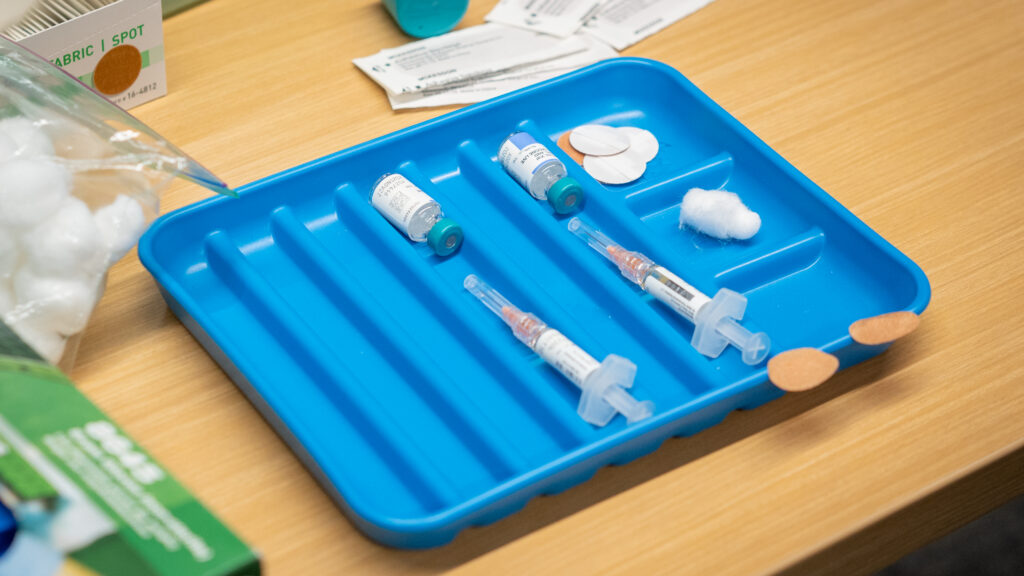Cold exposure can seem extreme at first, but it is quickly becoming one of the trendiest wellness practices for both mind and body. Immersing yourself in cold water gets your body to release a chain of powerful reactions that increase mood, soothe stress, and energize.
Backed by growing scientific research, cold plunging is good for the brain, increases immunity, and makes emotional resilience stronger. This is a natural process that is not complex, not time-consuming, and well ingrained in our body’s response to the surroundings. In this article, we explore the health benefits of cold water immersion and how to start safely.
Why Cold Plunging Feels So Good
People jump into freezing water, and you might wonder why. The science behind this practice reveals fascinating chemical reactions that happen in our bodies during cold exposure.
Mood boost from endorphins and dopamine
That wonderful afterglow you feel from a cold plunge is caused by real biochemical reactions in your body. Your body discharges very potent mood-altering substances when you have a cold bath. A 57°F cold plunge will raise your dopamine by 250% and your noradrenaline by an astonishing 530%. These remain elevated for several hours. Most people describe it as a natural high.
Dopamine is the “feel-good” transmitter that sets you to work, gets you energized and cheery. Your body releases noradrenaline to help control attention, mood, and memory too. In combination, these neurochemicals mix with endorphins (your built-in painkillers) to elevate your mood and create a deep sense of well-being.
Increased watchfulness and energy
Cold exposure does more than make you feel good. It’s not merely happy-making. Studies have shown that individuals become energized, alert, and concentrated immediately after cold exposure. Cold water activates your sympathetic nervous system—the “fight or flight” response that gets your brain in high gear and prepares your body to move.
Daily cold plungers say that they feel “energized” and strangely “alive” after their plunges.
Cold immersion also supports faster recovery after intense workouts by reducing inflammation and muscle soreness, making it popular among athletes and fitness enthusiasts.
This mental sharpness can stick around for hours, which makes cold plunging a great morning ritual to improve your natural energy levels.
Emotional reset and mental clarity
Cold water immersion is the emotional reset button. It has been shown to kill all bad feelings. In one study, people who submerged themselves in ice-cold sea water for 20 minutes experienced less tension, anger, depression, fatigue, and confusion.
Test subjects report feeling less upset and calmer after exiting cold-water immersion. Emotional cleansing gives your mind a clear head and enables you to handle problems better. Brain scans validate the benefit. Scientists found that cold exposure enhances connections between crucial brain circuits that include multiple limbic structures. Such physical changes explain why cold plungers think more clearly and feel their mood better.
How Cold Plunging Affects the Brain and Body
Your body starts an amazing chain of reactions the moment it touches icy water. These reactions go way beyond the reach and influence of what you feel. They show basic changes in your nervous system’s response, hormones, and even how your cells react to extreme temperature changes.
Activation of the sympathetic nervous system
Scientists call it the “cold shock response” when you plunge into cold water. Your body’s emergency response network – the sympathetic nervous system – kicks in right away. The original response includes an involuntary gasp and uncontrollable hyperventilation. Your heart rate shoots up and your blood pressure rises. This intense reaction peaks in 30 seconds, and most people adapt within 3-5 minutes.
Your sympathetic system gets more active and thus encourages more peripheral vasoconstriction, where blood vessels narrow to keep core temperature stable. The sort of thing I love is that cold water on your face triggers the parasympathetic system (your “rest and digest” response). This creates what researchers call an “autonomic conflict” that might cause cardiac arrhythmias in healthy people.
Hormonal shifts: cortisol, norepinephrine, and ACTH
Cold exposure kicks off a complex hormonal dance. Norepinephrine levels increase a lot with each cold dip, even after months of regular practice. This hormone plays a vital role in reducing pain and improving cold tolerance through non-shivering thermogenesis.
Your plasma adrenocorticotropic hormone (ACTH) and cortisol levels often drop by a lot after regular cold-water exposure. This adaptation shows your body becomes better at handling stress over time. A single 15-minute cold water session can lower cortisol levels 180 minutes after exposure.
Neural stimulation and cold-shock protein response
The cold cellular response is unmatched. Cold stress causes the activation of “cold-shock proteins” like RBM3, restoring and reviving nerve cell contacts. Research in animals shows that such proteins can have a preventive role against neurodegenerative disease through the preservation of neural connections.
Cold water immersion increases neural connectivity among networks of the brain and between the medial and left rostral prefrontal cortices, left anterior insula, and anterior cingulate cortex. These parts of the brain are responsible for attention, emotion, and self-regulation. As a result, psychological concentration and lucidity can be improved through exposure to cold.
Long-Term Benefits of Regular Cold Exposure
Regular cold exposure creates lasting changes in your body and mind. These physical adaptations bring substantial health benefits that stay with you long after warming up.
Improved stress tolerance and emotional resilience
Cold water immersion works like stress inoculation training. Research shows participants had substantially lower cortisol levels after four weeks of winter swimming. A 15-minute cold water plunge reduces cortisol levels for up to three hours.
Your body learns to release less cortisol when facing daily stressors through repeated exposure. This physical change leads to psychological resilience. Your nervous system becomes better at switching between stress and recovery states. People who practice this report better mood stability and emotional control.
Better immune response and reduced inflammation
A remarkable study shows people taking cold showers called in sick 29% less than those taking warm showers. The immune system gets this boost in part because cold exposure triggers white blood cell production needed to fight infections.
Cold water activates your lymphatic system. This helps remove toxins while increasing immune cell production and circulation. Blood vessels constrict in cold water, which reduces inflammation-related swelling. These benefits might extend to your brain and could lower your risk of mood disorders.
Enhanced metabolism and fat browning
Your metabolism jumps up to 350% during a cold plunge. This quick spike burns few calories, but cold exposure turns white fat (energy storage) into brown fat (calorie burning).
Brown adipose tissue (BAT) burns calories to generate heat through non-shivering thermogenesis, unlike white fat. Cold exposure improves insulin sensitivity by 43% in some people. Research shows people with detectable BAT levels saw their resting metabolic rate increase by 14% after cold exposure.
Doing It Right: Safety and Personalization
Safety first! The benefits of cold plunging are impressive, but you need proper technique and precautions. Let’s take a closer look at how to make this practice safe and tailored to your needs.
How to start cold plunging safely
You should consult your health care professional prior to starting, particularly if there are any medical conditions. The process needs to be gradually adapted to if you are a novice. Begin with short intervals (1-2 minutes) and relatively cold water at 59°F. Your safety is contingent on the participation of a second person, so always enter alone.
Walking or even stretching lightly exercises your body to get acclimated. Swim into the water instead of jumping in to avoid fatal hyperventilation. Your cold shock response is most powerful within 30 seconds, so breathe slowly and deeply.
Full-face vs. facial immersion
These procedures produce different physiological reactions from your body. Immersion in the full body triggers the sympathetic “fight or flight” response. This heightened metabolism and heart rate are achieved by constricting blood vessels to preserve core temperature.
Facial immersion is a different story. It activates the diving reflex by way of the vagus nerve and causes your parasympathetic system to slow your heart rate. Facial immersion is thus more appropriate for relief from anxiety, but it can affect sensitive facial skin.
Ideal temperature and duration
The safe starting temperature range sits between 50-59°F (10-15°C) for beginners. You can work toward 39-50°F (4-10°C) with experience, but temperatures below 50°F substantially increase risks. Women might need slightly warmer temperatures (55-65°F) due to physiological differences.
Maintaining a consistent water temperature is key for both safety and effectiveness. Many home users rely on a water chiller for cold plunge to control temperature precisely, especially during warmer months or in indoor setups.
Your sessions should stay brief. Begin with 30-60 seconds and build up to 3-5 minutes maximum. Dr. Huberman suggests a total weekly exposure of 11 minutes spread across 2-4 sessions.
Who should avoid cold plunging
Cold plunging is not recommended for individuals with the following conditions:
- Cardiovascular disease, including heart disease and uncontrolled hypertension
- Raynaud’s disease and peripheral vascular diseases
- Diabetes (particularly with neuropathy)
- Nerve disease and polyneuropathy
- Pregnancy (consult healthcare provider)
- Cold allergy or hypersensitivity
You should exit immediately if you experience chest pain, irregular breathing, lightheadedness, or extreme discomfort.
Conclusion
Cold plunging offers a powerful and natural way to support your overall health. It increases dopamine and norepinephrine, boosts metabolism, reduces inflammation, and improves emotional balance. With regular practice, your body adapts and your mental resilience grows.
Whether you are seeking better focus, lower stress, or a stronger immune system, cold exposure can deliver long-term benefits. Start slowly, choose safe water temperatures, and listen to your body. With the right approach, this once uncomfortable habit can become a valued part of your wellness routine. A few minutes in cold water might lead to a lifetime of positive change.
Image by NIck Bulanov from Pexels
The editorial staff of Medical News Bulletin had no role in the preparation of this post. The views and opinions expressed in this post are those of the advertiser and do not reflect those of Medical News Bulletin. Medical News Bulletin does not accept liability for any loss or damages caused by the use of any products or services, nor do we endorse any products, services, or links in our Sponsored Articles.









